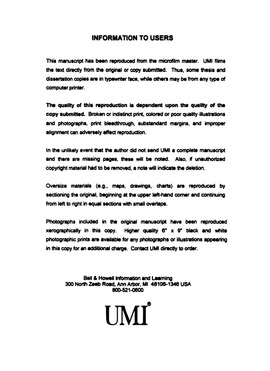| dc.contributor.advisor | Marek, Edmund, | en_US |
| dc.contributor.author | Haack, Constance. | en_US |
| dc.date.accessioned | 2013-08-16T12:30:57Z | |
| dc.date.available | 2013-08-16T12:30:57Z | |
| dc.date.issued | 2000 | en_US |
| dc.identifier.uri | https://hdl.handle.net/11244/5992 | |
| dc.description.abstract | This study was an exploration of students' use of scaffolded problems as part of their homework in an introductory calculus-based physics class. The study included consideration of the possible relationship of students' meaningful and rote learning approaches. The sample was comprised of 48 students who had completed all study instruments. Of this number, 23 did homework assignments that included scaffolded problems that had been divided into multiple steps that simplify, highlight, and organize the knowledge associated with the problem solving process. The other 25 students did non-scaffolded homework assignments. | en_US |
| dc.description.abstract | Think aloud protocols revealed patterns of difference between students who had done scaffolded homework problems and students who had done non-scaffolded homework problems. These included a greater tendency among scaffolded students to include declarative knowledge and to perform problem checks. It also included a greater tendency among non-scaffolded students to rely on the textbook as a reference during problem representation. Overall, students who had done scaffolded problems appeared to solve problems in a manner closer to that seen in expert problem solvers. Additionally, they showed evidence of problem solving habits, for instance checking, that might have a long term benefit. | en_US |
| dc.description.abstract | The Mechanics Baseline Test, given at the beginning of the study, measured students' prior knowledge of physics concepts. The Learning Approach Questionnaire, also given at the beginning of the study, measured students' meaningful and rote approaches to learning. Student responses to 6 qualitative physics problems and their selection of concepts associated with 4 quantitative physics problems was a gauge of their understanding of physics concepts. These 10 problems were distributed between 2 classroom examinations given during the study. | en_US |
| dc.description.abstract | At the end of the study 4 students who had done scaffolded homework problems and 4 students who had done non-scaffolded homework problems participated in think aloud protocols. They verbalized their thoughts as they attempted to solve 2 physics problems. Characterizations of individual problem solving approaches emerged from the think aloud protocols. | en_US |
| dc.description.abstract | An analysis of statistical data showed that students who did scaffolded problems attained significantly greater understanding of physics concepts than students who did non-scaffolded assignments. There were no significant differences by learning approaches, and no significant interactions. This indicates that scaffolded homework problems may benefit students regardless of learning orientation. | en_US |
| dc.format.extent | xi, 148 leaves : | en_US |
| dc.subject | Education, Sciences. | en_US |
| dc.subject | Physics Study and teaching. | en_US |
| dc.subject | Mathematical physics. | en_US |
| dc.title | Scaffolded problem-solving, learning approaches and understanding of concepts in an introductory college physics class. | en_US |
| dc.type | Thesis | en_US |
| dc.thesis.degree | Ph.D. | en_US |
| dc.thesis.degreeDiscipline | Department of Instructional Leadership and Academic Curriculum | en_US |
| dc.note | Adviser: Edmund Marek. | en_US |
| dc.note | Source: Dissertation Abstracts International, Volume: 61-06, Section: A, page: 2243. | en_US |
| ou.identifier | (UMI)AAI9975795 | en_US |
| ou.group | Jeannine Rainbolt College of Education::Department of Instructional Leadership and Academic Curriculum | |
